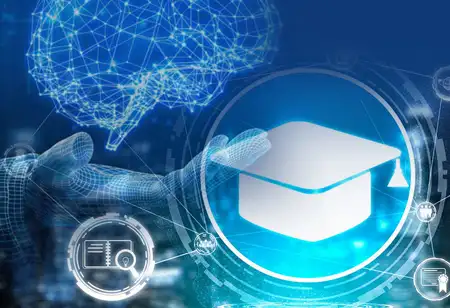THANK YOU FOR SUBSCRIBING
Be first to read the latest tech news, Industry Leader's Insights, and CIO interviews of medium and large enterprises exclusively from Education Technology Insights
Analyzing Trends to Streamline Education Offerings
The educational landscape has experienced a significant transition, with EdTech becoming increasingly important in ensuring students.

By
Education Technology Insights | Friday, July 14, 2023
Stay ahead of the industry with exclusive feature stories on the top companies, expert insights and the latest news delivered straight to your inbox. Subscribe today.
By focusing on diverse learner needs, delivering engaging content formats, and striking a balance between supply and demand, EdTech companies can create impactful solutions that foster strong connections with learners.
FREMONT, CA: The educational landscape has experienced a significant transition, with EdTech becoming increasingly important in ensuring students have access to high-quality education. With multiple firms aiming for a wider and more inclusive demography of learners, B2C (Business-to-Consumer) EdTech has experienced significant development. Companies have raised big fundraising rounds and achieved high values due to the tremendous investment this industry has garnered. It's critical to comprehend the major trends and problems that make B2C EdTech what it is if you want to effectively navigate this challenging environment.
In B2C EdTech, it's critical to consider each student's unique needs. Companies should provide a diversity of material that meets a range of demands rather than concentrating simply on specialized target audiences or discrete times in a learner's daily routine. When creating a complete learning product, quantity is key to guarantee scalability and inclusion. Quality is crucial in creating distinctiveness and long-term value, though. For students looking to master new skills, high-quality instructional content offers long-term benefits. For sustaining and raising content standards, efficient quality management procedures and learner feedback methods are essential.
The style in which educational material is delivered has become increasingly important in engaging students and maintaining their attention due to the democratization of content. Formats that are user-friendly, aesthetically pleasing, and simple to grasp are essential for grabbing the audience's attention. EdTech solutions must strike the correct mix between depth and simplicity to make the content understandable and accessible to students from various backgrounds and skill levels. Serving a variety of user bases with a single platform is a difficulty that EdTech products frequently confront. For example, the same product must satisfy paying consumers (often parents) and learning children/students in the preschool and K–12 sectors. Even though their demands could differ, meeting the needs of both groups is essential for a successful product. Startups must carefully negotiate this difficulty and create solutions that concurrently serve a variety of user groups.
Platforms for education technology that deliver content or learning support must carefully balance the supply and demand sides. Users who consume the information make up the demand side, while content developers, teachers, coaches, or others who offer learning sessions make up the supply side. The supply side must be encouraged to consistently produce and provide high-quality information to maintain a healthy ecosystem. Content providers may be engaged and kept on board with workflow automation capabilities and other value-added incentives, creating a beneficial feedback loop for all parties involved.
By emphasizing creating a daily learning companion more than a point solution, edtech businesses may strengthen their relationships with students. Startups may develop a stronger connection with their audience and increase engagement, retention, and user lifetime value by becoming a long-term, dependable resource for users. The platform's success is ultimately driven by the intimate relationship between the product and the student, improving the value perception among paying customers, such as parents.
Choosing whether to put the supply or demand side first might be difficult when establishing a new EdTech platform. Prioritizing the supply side might frequently be more important since it guarantees high-quality material availability, attracting and retaining people. Keep content producers interested and committed to the platform by providing tools that improve their experience and expedite workflows on the supply side. A robust and sustained supply-side produces an effective feedback loop, which increases the platform's user appeal and promotes long-term success.







